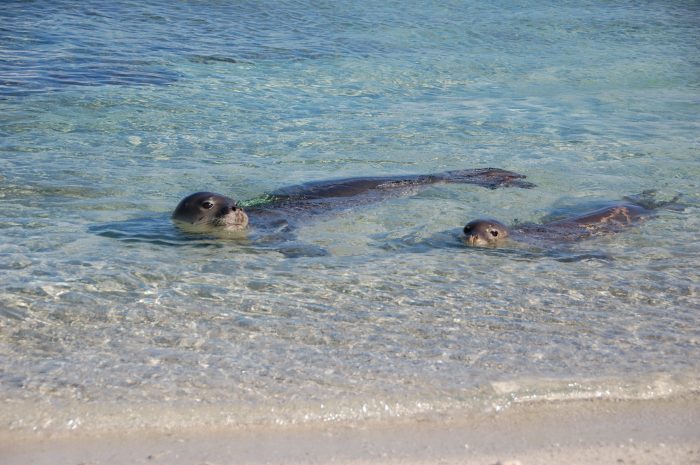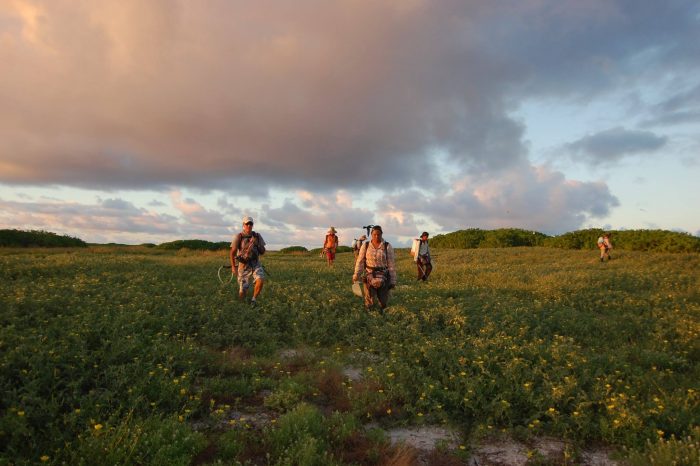By: Amanda Holdman, MS student, Geospatial Ecology and Marine Megafauna Lab & Oregon State Research Collective for Applied Acoustics, MMI
The GEMM Lab recently returned from the 4th International Marine Conservation Congress (IMMC4) in St. John’s, Newfoundland, Canada, and it was a whirlwind of activity to say the least. The flights were long and the morning coffee was scarce, but the setting was beautiful and plenty of scientific fun was had! The IMCC conferences are the largest international academic conferences on marine conservation and the theme of this year’s conference was to “Make Science Matter”, or in my interpretation “to use conservation science to drive policy change and implementation”. Over five days we were exposed to a flood of new ideas, hypothesis, methods/techniques, analyses and findings – even presenting our own!
Leigh, Florence, and I were all slated to give a talk on the opening day of presentations. Leigh presented on her new method for analyzing animal movement data in space and time, Florence on the effects of vessel activities on gray whales, and myself on the habitat use of harbor porpoise off of the Oregon Coast.
The conference was filled with non-stop talks, lunch sessions that incorporated workshops, student activities with plenary speakers, and an evening activity planned for every night. Short breaks during the conference shenanigans allowed for some exploring of the St. John’s area including Signal Hill, Cape Spear, and the George Street Festival. Highlights included humpback mom and calf, fin whales (my first time seeing them), dozens of seabirds I wish I could identify and some popular Canadian music.
 View from Signal Hill, where the first transatlantic wireless signal was received in 1901.
View from Signal Hill, where the first transatlantic wireless signal was received in 1901.
 The Arkells playing at the George St. Festival.
The Arkells playing at the George St. Festival.
 Light house at Cape Spear – the Eastern most point of North America!
Light house at Cape Spear – the Eastern most point of North America!
The conference was an awesome place to learn, meet and network with new friends, and catch up with some familiar faces. For Florence and I, our research fit perfectly into the theme of the IMCC conference. Being able to translate results of our work into relevant actions that can lead to improved marine conservation was an amazing feeling. Entering the academic sphere for the first time can be daunting, but the IMCC community was friendly, open and dedicated. Having others outside of our OSU family take an interest in our research truly shows that all of our hard work has paid off. We received great feedback and even some suggestions we could incorporate into our manuscript submissions! Definitely not something to be taken for granted!
On a more personal note, my talk, “The spatio-temporal distribution and ecological drivers of harbor porpoise off of the Oregon coast” seemed to be well received, I was honored to be awarded runner up for best student presentation by the conference!
I would not have received this award if it was not for Leigh, my committee members, OSU, and my lab mates. I couldn’t have been more proud of our lab and the feedback that we received at IMCC.
But now, the stress is over, the audience is gone, I’m still riding my high but I’ve found a moment of quietness on the plane ride home to analyze myself. I’ve been to a few regional conferences, and have been lucky enough to attend two large international conferences. However, now that I am nearing the end of graduate school (23 months down, 4 to go), it thus seems like a sensible time to reflect on how to make the most of these trips and experiences.
Apart from managing our research projects and scientific writing in graduate school, we are faced with the big challenge of presenting our research to a range of audiences. Oral presentations are one of the most important ways in which we communicate scientific results to other scientists and to be honest, NOTHING paralyses me more than having to present my work – or so I thought.
I am no stranger to sweaty palms and a racing heart. Whether it’s 5 people, 50 people, or 500 people – public speaking has always been a gut wrenching experience for me. When it comes to presentations, my flight response is in full swing, and the only thing that keeps me from running away from the presentation is that I would be more embarrassed fleeing than just giving the presentation.
However, gradual exposure and better practice over the past couple of years has helped me get over my fear of public speaking. I can’t say that I never get nervous when I have to speak in front of other people, but now my fear is controllable. Now, when I feel myself starting to get anxious I remember that while these feelings are very much real, they do not mean that I cannot give a good talk. The trick for me was learning to be separate from my anxiety by acknowledging it and allowing myself to have that feeling, and then deciding that even with that feeling I can move forward. It took quite a bit of practice for me not to be overwhelmed by these feelings of anxiety – but I’m happy to report that presenting in large groups DOES get easier with practice!
So for me, speaking at IMCC granted me with a sense of confidence, perhaps even a career-changing affirmative opportunity. Scouting out your audience or the room you speak in advance, writing your talk well before the delivery date, and practicing it numerous times reduces an enormous amount of pre-presentation jitters. I’ve learned how to manage the jitters in order to give a good presentation. In fact, I think public speaking can even be fun in addition to being a great way to spread your message!
Doing a masters (Or PhD) means you constantly challenge yourself and improve your skills. As I continue to encounter new situations and tackle new challenges, I expect that I will go through more cycles of lag and growth as I did with public speaking. I hope that I will have the perspective and patience to appreciate the lag times as integral parts of my development. The IMCC conference was only a snapshot of a major high, but it was an important milestone of my scientific career and personal journey.
Here’s a few more pictures from the beautiful St. Johns!  Jelly bean row!
Jelly bean row!
 Eating lunch and overlooking the harbor at Signal Hill.
Eating lunch and overlooking the harbor at Signal Hill.
 Boat houses at Quidi Vidi Harbour.
Boat houses at Quidi Vidi Harbour.


















































